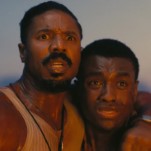Witnessing James Rodriguez’ “Goal of the Consecration” Live at the Maracana
I was lucky enough to be in the crowd at the Maracana to witness the chest and volley that transformed Colombia’s James Rodriguez from “up-and-coming soccer star” to “integral part of the global consciousness.” Medellin’s newspaper El Colombiano dubbed the strike “The Goal Of The Consecration” which … may be too much, but I’ll go with it for now. Anyway, here are a few notes on the goal.
The first thing that struck me after the ball hit the net and I put my brain back in my skull was that the game hadn’t slowed down when James took his first touch. When speculative long range efforts beat a goalkeeper and stay on target, usually the shooter has found himself in a vast expanse of space. Time stops as everyone in the stadium realizes that the spectacular might happen and everyone on the defense lunges hopelessly and mutters an expletive under their breath. And in that vacuum, the striker has the crucial opportunity to adjust his body ever so slightly.
James did not have a vast expanse of space or time in which to work. Instead, he was forced to fire under pressure from a bad angle, so it was only when the ball started dipping, right before it slipped over Uruguayan goalkeeper Fernando Muslera’s fingers, that the crowd knew what was about to happen. But there was also something so pure about the strike, and so compelling about the striker that when the ball dipped, there was no doubt. The mood of 75,000 people in the Maracana shifted immediately, before the ball reached the goal. It was a sudden change in direction that announced, “this is going in, and it doesn’t matter what else happens.”
Also, most of the best goals, the ones that live in the minds of old Irishmen and grainy YouTube clips, beat the keeper soundly enough that there is no contact. But this, again, was different. Muslera anticipated James’ strike perfectly, and got the edge of a fingertip on it, enough to push it off the bar. That the ball still found the back of the net made the whole thing even more satisfying. There were five points of contact on the goal: chest, foot, hand, bar, ground. And somewhere between foot and ground the crowd at the Maracana exploded.
-

-

-

-

-

-

-

-

-

-

-

-

-

-

-

-

-

-

-

-

-

-

-

-

-

-

-

-

-

-

-

-

-

-

-

-

-

-

-

-








































